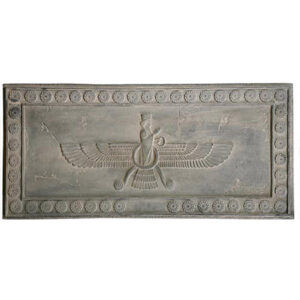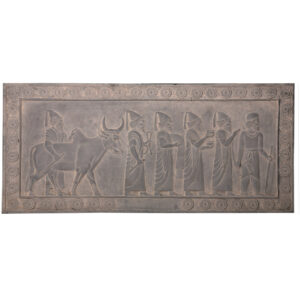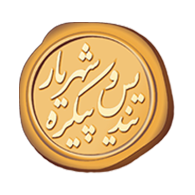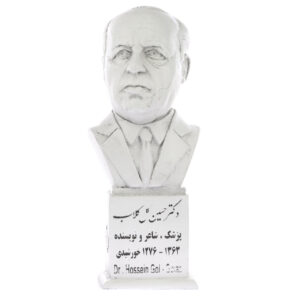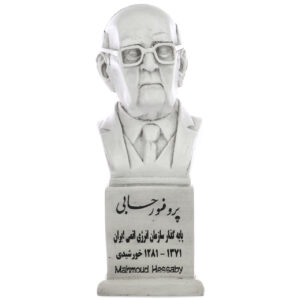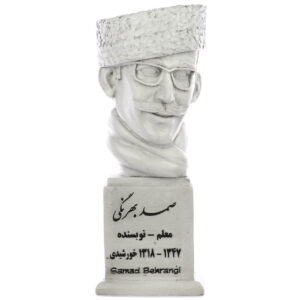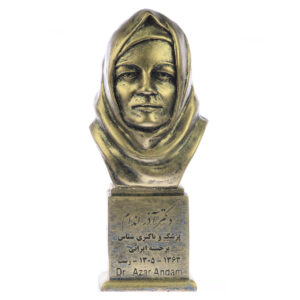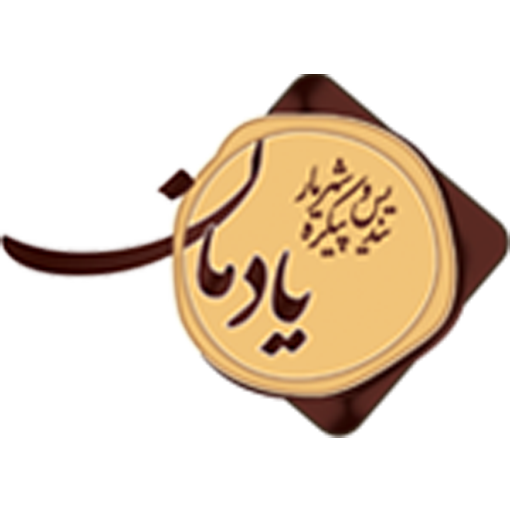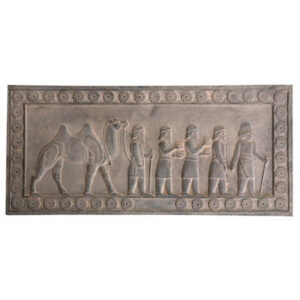Greeks and Bactrians

The people below are Yaunâ or, as we would call them, Ionian Greeks. They are not represented as we – accustomed to Greek art – would have expected them, which is surprising because these reliefs are believed to have been made by Greek sculptors. Yet, these people wear no Greek dresses: instead they are dressed like Lydians (above). They also have a garment with striped sleeves and low shoes. Unlike their eastern neighbors, the Greeks have no coned hats.
The Greek presents are two ribbed metal cups, two pairs of shallow metal bowls, two sets of folded fabrics (perhaps blankets), and two pairs of convex cones that cannot be identified with any certainty. On the corresponding relief at the northern stairs of the Apadana, they are replaced by balls. However, the cones or balls are likely to have been hanks of threads, probably wool, because the sculptor uses the same gulflike pattern on the striped sleeve and the cones. This suggests that the cones are textiles too.
The Bactrians, who lived in northern Afghanistan and southern Uzbekistan, are easily recognizable because they are accompanied by a Bactrian camel (note the little bell). The other presents for the great king are two deep and two shallow bowls.
The Bactrians are dressed like Median cavalry men, but their trousers are different. They also have wreaths in their hair, which is tied in a knot. The Bactrians also have earrings, which is unusual. The only people with these jewelry are Bactrians, Arachosians (below) and very important court officials like the mayor of the palace. This may or may not indicate that the Bactrians had a special position in the Achaemenid empire, as the apanage of the crown prince (mathišta).

Persepolis, Apadana, East Stairs, Southern part, Greeks |

Persepolis, Apadana, East Stairs, Southern part, Greeks |

Persepolis, Apadana, East Stairs, Southern part, Bactrians |

Persepolis, Apadana, East Stairs, Bactrian |
|
Description |
Persepolis, Apadana, East Stairs, Southern part, Bactrians |
|
Date |
ca. 520 BCE–486 BCE |
Bactria was a province of the Persian empire located in modern Afghanistan, Uzbekistan, and Tajikistan. After the defeat of Darius III of Persia, Bactria continued to offer resistance against Alexander the Great, led by Bessus, who had proclaimed himself successor to Darius.

Bactria was a province of the Persian empire located in modern Afghanistan, Uzbekistan, and Tajikistan.
After the defeat of Darius III of Persia, Bactria continued to offer resistance against Alexander the Great, led by Bessus, who had proclaimed himself successor to Darius. Alexander conquered it with great difficulty between 329-327 BCE, largely with the help of local auxiliary forces. During his stay there, Alexander married a Bactrian woman, Roxanne, to aid his effort of controlling the region.
 Bactrians, Apadana Staircase, Persepolis |
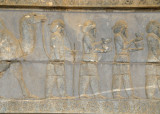 Bactrians, Apadana Staircase, Persepolis |
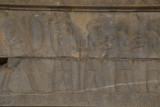 Original Image – Bactrians, Apadana Staircase, Persepolis |
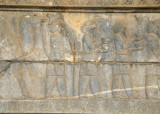 Bactrians, Apadana Staircase, Persepolis – Levels Adjusted |
After Alexander’s death, Bactria was part of the Seleucid Empire. The many difficulties against which the Seleucid kings had to fight and the attacks of Ptolemy II of Egypt gave Diodotus, satrap of Bactria, the opportunity to declare independence (about 255 BCE) and conquer Sogdiana, founding the Indo-Greek Kingdom.











 Candle Holder
Candle Holder Coasters
Coasters Jewelry Box
Jewelry Box
